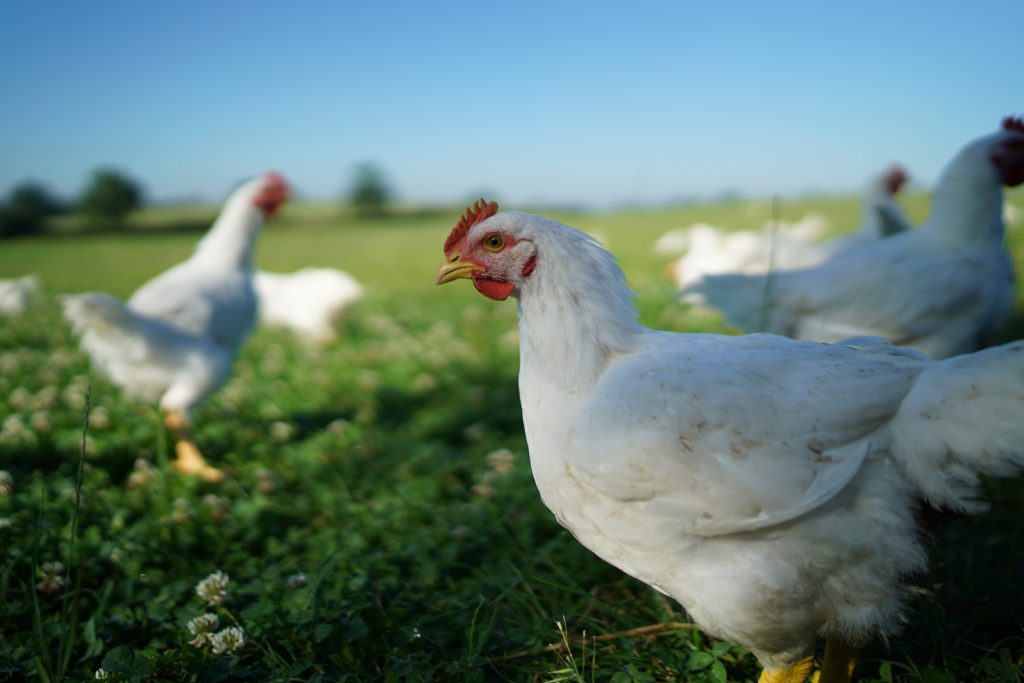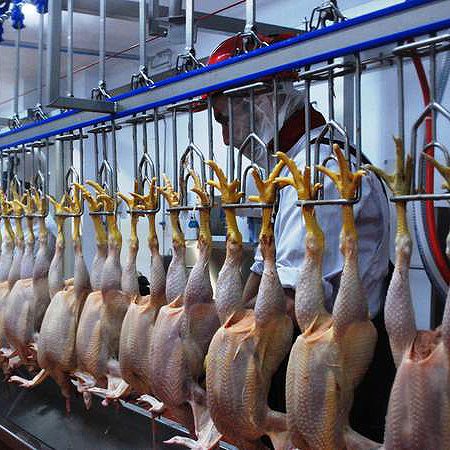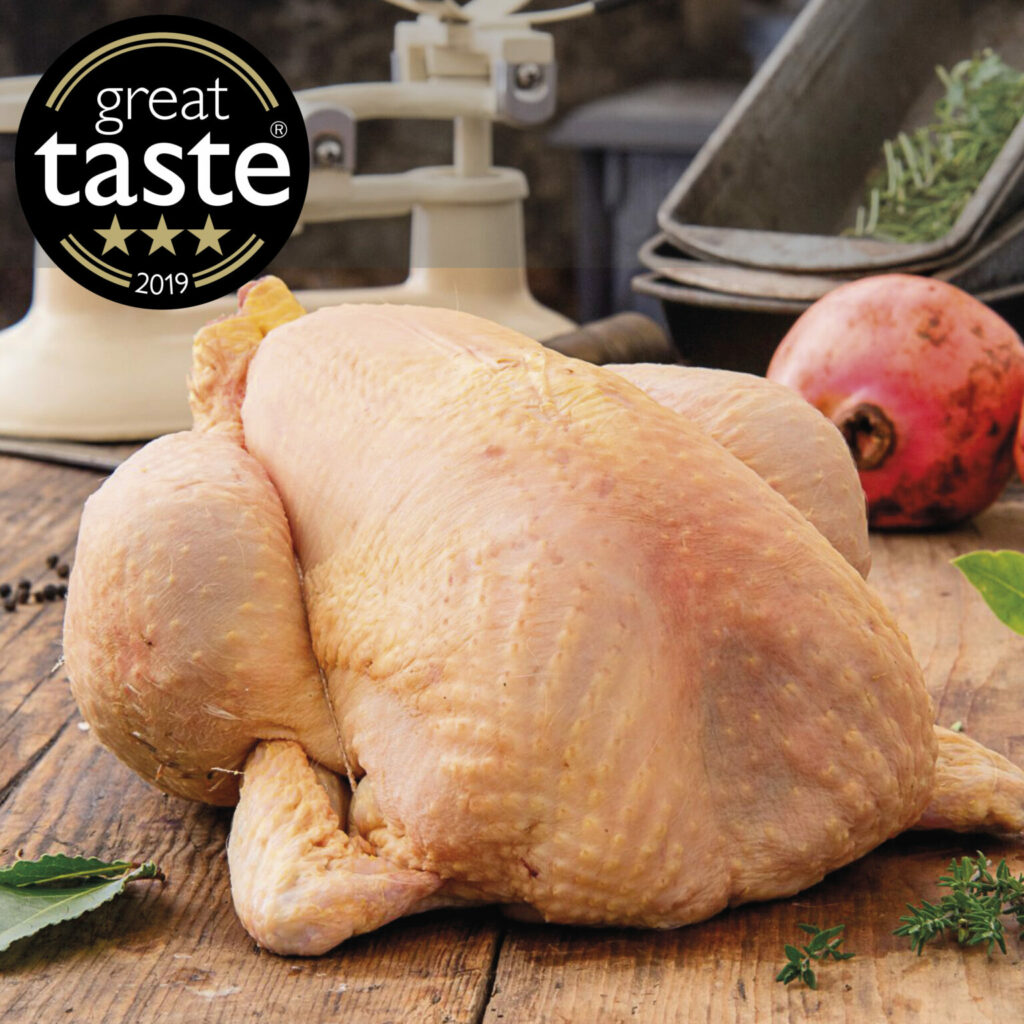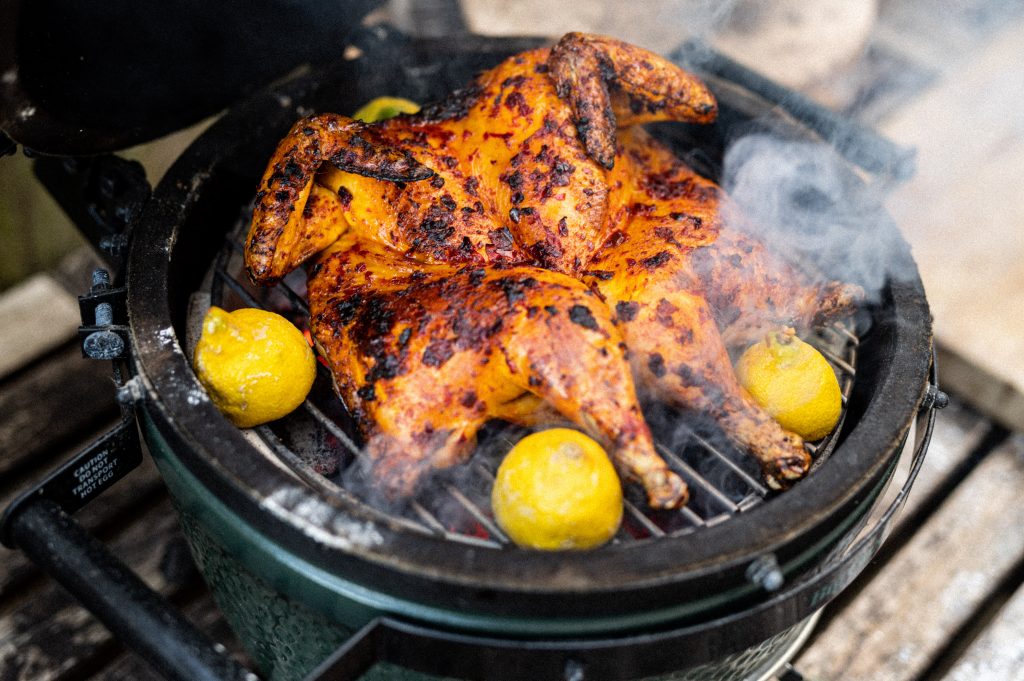The best BBQ Delivery Boxes in the UK from small sustainable British Farms
It can be difficult to know if organic chicken really is any different from the cheapest on offer and, crucially, if it’s worth the extra price. Even if we would spend upwards of £20 on the occasional pub Sunday roast for one, £25 including a nice glass of wine, when it comes to buying chicken in a supermarket we can’t help but question, ‘what’s the difference?’.
We produce a staggering one billion chickens a year in the UK
GOV.UK
Unsurprisingly, many of us who are searching for a balance between quality and value opt for the middle ground.
But, what many people don’t know is that while there’s a huge gulf between intensively farmed and organic chickens, there’s less of a difference between intensively farmed chicken and “technically” free-range chicken.
Organic chicken and “genuinely” or “properly” free-range chickens are also much closer than you might think.
Confused? This is why you could be paying over the odds for low-quality chicken in pretty packaging.
Let us unravel it for you…

A nation of chicken connoisseurs?
Chicken is by far the nation’s favourite meat, with more than one billion chickens produced in the UK each year.
Technically, we should be a nation of chicken connoisseurs by now; we should be seeking that perfect combination of a firm texture, with a deep flavour reflective of the lush meadows each chicken has been reared in.
A combination that tells us the chicken grew at a natural pace with access to meadows, ate a nutritionally rich diet that nourished it and will, in turn, nourish us.
Yet, despite the huge quantities we consume – or perhaps because of it – our feelings towards poultry are more indifferent than appreciative.
We have lowered our expectations and come to accept sub-standard chicken as doing the job of filling a sandwich and filling a hole.
This has especially been the case since chicken, marketed as “high in protein and low in fat”, has become the go-to option for many diets and fitness regimes.
But, the reality is often far from the dream we are being sold.
“Chicken has been a real focus of my work the past few years because when production goes bad, it goes really bad. When you look at the full spectrum of environmental impacts associated with poultry production, industrial systems are among the worst,” says Soil Association’s head of food policy and author of The Meat Paradox, Rob Percival.
“It’s kind been given a free-pass culturally over the past decade because it’s perceived to be a healthy meat, but production has been getting progressively worse and that’s been fuelled by rising consumer demand. People are blind to the harms in the background.”

Fast-growing chicken breeds: Ross and Cobb
Did you know there were different chicken breeds?
“The breed of the birds is so more important than people realise,” says Abby Allen, farms director of Pipers Farm.
The most commonly consumed chickens in the UK are now the Ross or Cobb varieties, and yet you’ve probably never heard of them.
The Ross has been genetically bred to grow at a speed so unnatural it is the equivalent to a child weighing 28 stone by its third birthday, reported the RSPCA, back in 2017. This chicken is typically reared indoors and slaughtered at just 35 days old, by which time it is so unnaturally heavy it can barely stand, let alone walk.
“It’s this sort of horrible thing that we’ve done with the genetics, where we’ve created something that fundamentally is a monster,” explains Allen. “That’s my biggest issue with intensive chicken. It is so shocking from an animal welfare perspective.”
This is why we can buy a whole factory-farmed chicken from £3.23 in Tesco ‒ cheaper than the price of a coffee or pint of beer ‒ while a supermarket organic chicken costs at least five times that (and can’t be bought in Tesco at the time of writing this article)
“A lot of people have got into this idea that a massive round football is a good-looking chicken in a supermarket. And, actually, that’s the exact opposite of a good chicken. If there’s too much breast meat that’s not natural,” says Nick Ball of Fosse Meadows.

Slow-growing chicken beed: Hubbard
Organic and free-range farmers more commonly opt for the Hubbard bird. The Hubbard grows at a much more natural pace (organic birds live for about double the length of time) and has stronger legs, so it can roam free for its whole life.
Free-range and organic chickens are more expensive because they cost more to produce. Feed accounts for about 70% of the cost to rear a chicken and these birds are eating for double the amount of time. Plus the older and bigger they get, the more they consume.
But, you genuinely can taste the difference, there is more texture and depth of flavour to the meat. You’ll also find less water oozing out when you’re cooking.
“We grow our chickens to 81 days, so we make sure the birds grow naturally and go to maturity,” says Ball. “The reason customers come back is for the flavour. They want a chicken that has been reared humanely – but what keeps them coming back is the flavour, always.”
Live Frankly Recommends
Here’s our top three favourite places to buy delicious, high-welfare free-range and/or organic chicken:
Is organic chicken better?
To be classed as organic in the UK, chickens have to be grown to at least 70 days and given access to pasture to ensure they are growing more in line with what nature intended.
This lifestyle means the chickens contain less saturated fat and higher omega-3 fatty acids, which are good for your heart.
Another important point is that mutilations of birds is prohibited. This includes beak trimming. In non-organic systems, this is often done to prevent chickens peck each other, which arises as a symptom of stress from overcrowding.
Plus, chickens in organic systems are only given antibiotics if absolutely necessary. Whereas in lower welfare systems they are given them regularly to prevent the spread of disease.
The Soil Association reports that farm animals now account for almost two-thirds of all antibiotics used in the EU.
These are passed down to us through the food chain – you are what you eat, after all.
How do you know if you’re buying genuinely better chicken?
If you’re buying chicken from a supermarket, the best option is organic.
If you’re buying from a butcher, direct from a farm or eating out we would also advocate for genuinely free-range systems.
Here are three questions you can ask before opting for chicken:
1. What breed of bird is it?
2. How old was it when it was killed?
3. How many birds are there per house?
The answers you are looking for are:
1. Hubbard
2. At least 70 days
3. Ideally hundreds per house (although Soil Association organic allows up to 1,000, other organic certifications allow up to 4,800).
The best of organic chicken will typically meet these standards; and ‘genuinely’ free-range – compared to ‘technically’ free-range (which isn’t free-range at all) – will, too.

How cheap chicken is really produced: Intensive Processing Units
A new Soil Association report reveals that in intensive systems, there are commonly 40,000 chickens per Intensive Processing Unit (IPU) and that number is growing.
The chicks are typically owned and delivered ready-formed by a producer. This producer provides strict instructions on how they should be reared for maximum growth.
These include insisting they stay indoors, have a high amount of protein in their feed, and are kept in long hours of artificial light so they stay awake eating longer and grow fatter, quicker.
They then collect them for slaughter.
So, the farmers in these systems have little control over how they are actually farming.
“Farmers aren’t really the powerful actors in this situation, it’s the processor who holds all the cards along with the retailers who are buying the product,” stresses Percival.
Two shocking stats are that chickens are often so tightly packed they have the equivalent of an A4 piece of paper to live on.
This means intensively farmed chickens have more space in the oven than they do the shed.
If this is all feeling fairly shocking to you, you’re not alone.
“There’s a really good reason people aren’t aware of these sheds. They are tucked away in quiet corners of the countryside you can’t access. Meanwhile, the industry paints a very clean image of itself,” says Percival.
“It’s all done very deliberately to pull the wool over consumers eyes, so that they don’t know about the welfare harms nor the environmental pollution and damage that comes with chicken farming.”

What does free-range chicken really mean?
There are ‘genuinely’ free-range chicken farms that deliver directly to your door, such as Pipers Farm and Fosse Meadows.
But, free-range is a legal term that has been abused by producers with clever marketing teams.
Legally, the producers are required to give the chickens a certain amount of space.
But, many processors employ tactics such as only opening a small door and putting the feed at the opposite end of the shed, so only very few chickens are free-ranging.
Don’t be fooled. These systems often look much more like the intensive system than the organic one.
Asking those three questions above will help you to determining the difference between ‘technically’ free-range and ‘properly’ free-range.

We need to talk about slaughter
Slaughter isn’t the nicest part of any story to tell, but it’s an important part.
A 2018 report by the Sustainable Food Trust, A Good Life and A Good Death: Relocalising Farm Animal Slaughter, highlights how small, local abattoirs are “at a critical point and in danger of collapse”.
It revealed there were only 63 left in England, down from 1,700 in the 1970s.
Over the past two years there have been at least five further closures. This is catastrophic for welfare.
Head of policy and campaigns for the Sustainable Food Trust, Megan Perry, states: “The wide-scale loss of local meat supply chains is pushing the UK towards an increasingly centralised, consolidated system, dominated by supermarkets and a few, very large slaughtering and processing operations.
“Animals are being taken on increasingly long journeys, in some cases as many as 200 miles, to be slaughtered. This is bad for animal welfare, bad for the environment and bad for customers who want to buy local meat.”
The 2 Sisters Food Group slaughterhouse in Wales is one of the largest in the UK and the main abattoir supplying Tesco; it’s open 24 hours a day.
When large numbers are the name of the game, there are also horror stories of chickens being grabbed three at a time. They are carelessly pushed into crates where their legs, wings or heads can get crushed.
Plus, Compassion in World Farming reports that around 160 million UK chickens are slaughtered without being properly stunned each year. This causes extreme pain, distress and suffering.
What we can all do: eat less, eat better
“It’s controversial to say – especially as we’re meat farmers – but we really should not be eating the amount of chicken and pork that we do in this country. We have to get back to this idea of it being a treat for it to be properly sustainable system,” says Piper’s Farm Allen.
“It’s not just about flavour. It’s about making this style of chicken-farming viable for the future. This is the only way we can really wean ourselves off industrial production.”
Farming in this way is more expensive. That’s not the issue. Our expectation that chicken should be cheap is the problem.
Farmers always tell you to use the whole animal – including the carcass to make a chicken stock or soup – to make your money go further. This also takes some getting used to.
But a cheap chicken will possibly serve two people for one meal.
A Piper’s Farm or Fosse Meadows chicken can create three meals, plus a delicious sandwich.
This is a much more respectful way to eat meat – and, crucially, you’ll enjoy it so much more.
Main image: Pipers Farm properly free-range chicken. Matt Austin.





